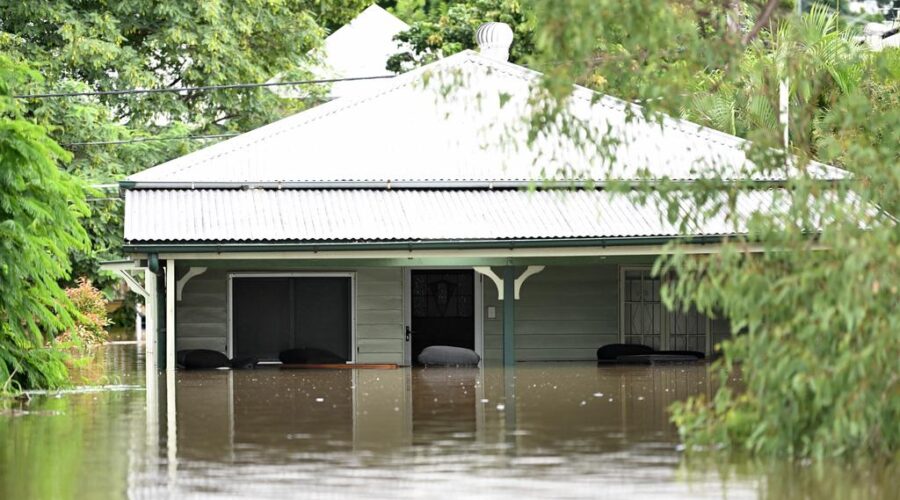With colder, wetter weather on the way, many in flood-prone areas and those who have been flooded before may now start to be worrying about the potential threat to their homes. With the ongoing cost-of-living crisis, the prospect of having to fork out thousands of pounds to repair flood damaged property doesn’t even bare thinking about.
A staggering 5 million people in England and Wales live in flood risk areas, with one in six homes in England being at risk of flooding and annual flood damage costs in England amount to a whopping £1.1 billion. These numbers are only likely to increase over the coming years as the climate crisis continues and extreme weather events become more common.
Those affected should seek to take every precaution when it comes to protecting their homes and themselves. We have there for looked into the top ways to safeguard from costly flood damage.
Check the flood risk in your area
If you are unsure of the risk of flooding in your area, you can check the potential threat of flooding by entering your postcode on the government website which analyses the long-term flood risk in your area.
It will tell you the extent of the risk of flooding from rivers and the sea as well as surface water. This is a good tool to use to gauge what precautions you should take and how best to prepare.
The link to the website is: https://www.gov.uk/check-long-term-flood-risk
Create a flood plan
If your home is in an area that is deemed at risk, you should formulate a plan of action should the worst happen. This will help you deal with a flood as it happens and aid with the recovery process. You may be able to download a guide from your local council or flood agency.
In your plan you should include:
- A list of useful phone numbers. For example, your local council and flood agency, utility providers and insurance companies.
- How to turn off your electricity and gas supply.
- Moving valuable possessions out of harm’s way, preferably upstairs if you live in a house. If the lower levels are at risk of water damage, move as much upstairs as possible, including furniture.
- Think about who could offer you help. Do you have family and friends who would take you in should your property become unliveable? Ask them in advance if you think flooding may occur.
Organise a flood kit
Put together a kit of essential and useful items that will help you during a flood. You might want to include:
- Insurance documents
- A torch with spare batteries
- A portable charger to charge your phone
- A first aid kit and any prescription medicines
- Bottled water and snacks
- A battery or wind-up radio
- Supplies for looking after babies and pets if necessary
Resistance measures
You should seek to make your home as watertight as possible to stop water getting in in the first place. Placing temporary seals over doors and windows will stop water leaking in and one-way valves on toilets and drainage pipes will decrease the risk of sewage rising into the property. Sandbags and removable plastic barriers outside and inside will also help stop water from encroaching on and entering your home.
You can purchase special waterproof plastic bags to prevent damage to possessions. These can be large enough to cover large items of furniture and even cars and are a great option if you are not able to move possessions upstairs. Another option is to install high up shelving to store valuable items.
You can even install water sensors which detect water entering the property. This will allow you to return home as soon as possible and take the necessary action if you are not home at the time of flooding.
Flood-proof your home
If you have the money to do so, getting ahead of the game and making your home as flood-proof as possible is the best way to mitigate any potential damage.
You can do this by moving plug sockets further up the walls, replacing carpet and wooden floors with ceramic or stone tiles and replacing wooden window frames with UPVC. Fitting water-resistant skirting boards is also preferable over wooden ones. While less attractive, all you would need to do is wipe them down after a flood. An alternative to this is varnishing your skirting boards which will help water runoff them more.
A more expensive option is building a flood barrier. This can cost up to tens of thousands of pounds but will stop water encroaching on property and may save money in the long-term. It may be worth asking neighbours about this so that resources can be combined to make this more affordable.
Whatever the risk of flooding to your home, it always best to be prepared and the precautions you take can be tailored to your specific needs and budget to provide you with as much protection as possible.
This article was written by an online estate agent House Sales Direct. If you wish to sell your house fast and for free, then head over to the House Sales Direct website for more property related information and enquiries.

